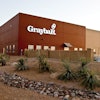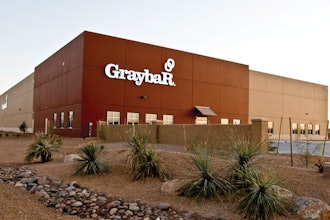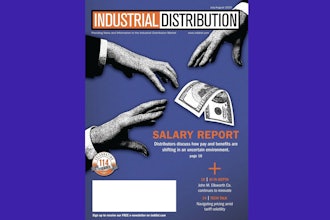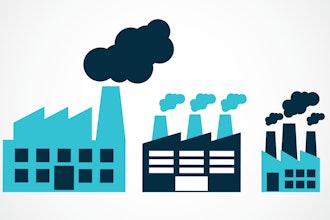
A generation ago, the world of distribution sales was a much different place. Sales representatives made calls to potential buyers, where they generally dealt with specific purchasing departments.
Today, according to Claudia Hughes, the senior vice president and chief sales officer of Long Island-based distributor Global Industrial, “everyone’s a buyer” — and they’re joining sales conversations armed with much more information than they would have had in the past.
That can be a challenge, but Hughes says the Global Industrial sales team is encouraged to look at it as a new opportunity: from multiple buys can come multiple avenues to sell.
Hughes recently spoke with Industrial Distribution about the changing nature of distributor sales — and how more knowledge can make sales reps more valuable to their customers.
The following interview has been edited for clarity.
ID: What are some of the biggest barriers currently in this economy that are getting in the way of salespeople?
CH: When I think of the current market conditions, I think that it’s cyclical; everyone rides those waves. As far as microeconomic conditions, I think the biggest disruptor for sales in general – in distribution and in other industries – is what I call the ‘digital-first mentality.’ All the research says 70% of decision-making is basically done before you even engage with your sales rep, so that is a big change for a traditional distribution sales organization. There are multiple sources now for the product, so customers can not only look for what they want, they can see a price from multiple suppliers. They’re already coming into the conversation with the sales rep armed with information that they didn’t have in the past.
I say everyone’s a buyer now; it’s not just purchasing. Everybody’s a buyer because everybody has access. So there are more decision-makers getting involved in the process that can elongate the sales cycle. But what you hear from most customers is that they want that self-service option, so sales reps have to figure out: ‘How do we coexist with a self-service mentality and still add value?’ How can they provide that personal relationship and that value to the customer to actually take the sale further than what the customer was looking for online? When I look at it now, like with the digital-first mentality, it’s putting the buyers in control and sales teams have to adapt with that knowledge — how they can fit into that process, build their value, expand their relationships and then, ultimately, expand their sale from whatever it was that the customer was initially looking for.
ID: Can you give us some examples of how you’re seeing salespeople tackle that as the approach is changing; the buyer-first mentality, as you said?
 Claudia HughesGlobal Industrial
Claudia HughesGlobal Industrial
And then I look at it as lead generation, because there are multiple people that could be looking at your site. Companies garner that information, pass it back to the salespeople to say, ‘Hey, this is a potential lead.’ You might not have known that this person exists at this company. Obviously, what’s going on in the economy now is that there’s a lot of changeover and restructuring going on in all companies, large and small. So buyers are changing. Being able to tap into who’s actually looking online or making purchases online creates a new contact database for the sales reps — which is also supplemented with technology tools that we need to use to keep the contacts updated that we’re calling on. So I think we’re over-simplifying in saying customers only want self-service. There’s still a space here for personalization that a sales rep brings and helps show the value of the company and helps the customer with the sale. You’re armed with that information ahead of time. Knowledge is power, and that makes you more valuable to your customer.
ID: So with that being said, do you find that the reps are challenged to relay the value of service – that overall package – when customers are coming to them first online? I know sometimes customers come in and they look at these products like they’re commodities, or it’s just a quick transactional sale. How do the reps then come in and sort of modify that scope of the project and the sale?
CH: It goes back to discovery calls. You don’t know what you don’t know. It’s really understanding: what’s the use? ‘Hey, what are you guys working on? What’s the use of this widget?’ And then having that knowledge, or having subject matter experts on staff, or all the collateral that they have in their company, to understand what other categories maybe are complementary to that. Now, the rep is adding value to the conversation.
Another thing is also understanding what industry that customer is in and how they may be using that product. By asking those questions, you can then possibly relate it to another customer that was in a similar situation. And that’s how you’re adding value. You’re sharing experiences of... ‘Company A just went through this expansion; these are the products that they used. Is this something that you’re looking at?’ So you’re giving that buyer experiences that they might not have within their existing organization.
ID: Let’s talk about the distributor sales process of the future. Do you have any insight into, as we move forward with more online transactions, more transparency, how that might change the sales process in distribution organizations going forward?
CH: I think technology is going to be the biggest thing that inserts itself into the sales process of the future. Every step of the way, technology has to go along that roadmap: sales, marketing and analytics are now the new sales process. All those things have to be interconnected, but I think that companies have to layer in how the opportunities are starting in the pipeline, whether it’s online or rep outreach, and then where does the technology fit into each step of that process?
After you close a sale, you also would be using guided selling tools that companies are investing in to know what would be next: ‘What would be the next category that I should offer to this customer that perhaps they didn’t search for?’ I think technology ends up fitting into the sales process. It’s a work in progress for many companies because there are so many tools out there. But that’s what we have to embrace.
ID: Is there anything that you think is really important in terms of your company’s sales journey — important efforts that you’re looking at internally?
CH: As I said, sales, marketing and analytics are intertwined. Those groups spend a lot of time together really looking for insights and building tools organically to make sure that our salesforce is assigned to the right customers, and then feeding them that information of what their customers are looking for. How do we support that? Not only with sales outreach, but also with marketing. It’s getting the customer at the right time, right after they’re searching for something, and then using those analytics and filtering in.
I think the big next step is what would be next if they’re looking for product A. ‘I need this for a project, or I need this because something broke.’ How do you translate that into future sales in different categories? So I think that’s what’s most important to me right now: how do I intertwine all those to continue to grow different categories within our existing customer base and at the same time bringing in new customers. At the end of the day, it’s about utilizing sales, marketing and analytics tools to make sure that we’re targeting the right avenues for growth.























